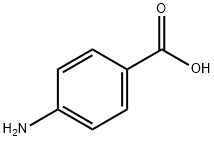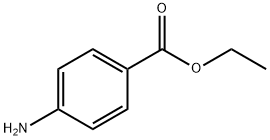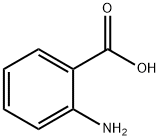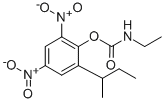Isoprocarb
Synonym(s):2-Isopropylphenyl N-methylcarbamate
- CAS NO.:2631-40-5
- Empirical Formula: C11H15NO2
- Molecular Weight: 193.24
- MDL number: MFCD00053078
- EINECS: 220-114-6
- SAFETY DATA SHEET (SDS)
- Update Date: 2025-07-04 15:11:01

What is Isoprocarb?
Description
Isoprocarb, o-cumenyl methylcarbamate (IUPAC), consists of colorless crystals, which are sparingly soluble in water and are readily soluble in acetone and methanol. Isoprocarb is produced by reaction of 2-isopropylphenol with methylisocyanate. Isoprocarb is used for control of rice, cacao, sugarcane, and vegetable pests.
Chemical properties
Isoprocarb is a carbamate insecticide. It is a colourless crystalline substance, sparingly soluble in water (0.265g/l) and readily soluble in acetone(400g/l) and methanol (125g/l). It is hydrolysed in alkaline media.
The insecticide,with contact and stomach action, effectively controls leafhoppers,plant hoppers and aphids on a variety of crops like rice, cocoa, sugarcane and vegetables. Its residual activity gives effective pest control. It acts by inhibiting cholinesterase.
The Uses of Isoprocarb
Isoprocarb is a non-systematic carbamate insecticide. Isoprocarb functions by reversibly inactivating the enzyme acetylcholinesterase in insects.
Definition
ChEBI: Isoprocarb is a carbamate ester. It has a role as an EC 3.1.1.7 (acetylcholinesterase) inhibitor, a carbamate insecticide and an agrochemical. It is functionally related to a methylcarbamic acid and a 2-isopropylphenol.
Safety Profile
Poison by ingestion, intravenous, and intraperitoneal routes. Moderately toxic by skin contact. When heated to decomposition it emits toxic fumes of NOx. See also CARBAMATES. Used for controlling leafhoppers, planthoppers, and bugs in rice and cacao.
Toxicology
The insecticide isoprocarb is a Class II toxin (moderately hazardous), with the acute oral LD50 among rats being 403-485mg/kg, while the percutaneous LD50 among male rats and mice is>500mg. It is a PAN Bad Actor chemical, since it is a cholinesterase inhibitor. Symptoms of poisoning with this insecticide include muscle weakness,dizziness,salivation,nausea,vomiting,sweating,headache,effects on the CNS and depression. PPE such as splash-resistant safety goggles and chemicalresistant clothing, gloves and masks are advised.
Properties of Isoprocarb
| Melting point: | 92.4°C |
| Boiling point: | 329.46°C (rough estimate) |
| Density | 1.0945 (rough estimate) |
| refractive index | 1.5080 (estimate) |
| Flash point: | -18 °C |
| storage temp. | Sealed in dry,2-8°C |
| solubility | Chloroform (Slightly), Methanol (Slightly) |
| pka | 12.22±0.46(Predicted) |
| form | Crystalline |
| BRN | 1875020 |
| CAS DataBase Reference | 2631-40-5(CAS DataBase Reference) |
| NIST Chemistry Reference | 2-(1-Methylethyl)phenyl methylcarbamate(2631-40-5) |
| EPA Substance Registry System | Isoprocarb (2631-40-5) |
Safety information for Isoprocarb
| Signal word | Warning |
| Pictogram(s) |
 Exclamation Mark Irritant GHS07  Environment GHS09 |
| GHS Hazard Statements |
H302:Acute toxicity,oral H410:Hazardous to the aquatic environment, long-term hazard |
| Precautionary Statement Codes |
P273:Avoid release to the environment. |
Computed Descriptors for Isoprocarb
New Products
4,4-Difluoropiperidine hydrochloride tert-butyl 9-methoxy-3-azaspiro[5.5]undecane-3-carboxylate Indole Methyl Resin N-Isopropylurea N,N-Dicyclohexylcarbodiimide(DCC) MELDRUMS ACID 5-METHYLISOXAZOLE-4-CARBOXYLIC ACID Magnessium Bis glycinate Zinc ascorbate 1-bromo-2-butyne 2-acetamidophenol 9(10H)-anthracenone Erythrosin B, 4-Piperidinopiperidine 2-((4-morpholinophenylamino) (methylthio) methylene) malononitrile 2,4-dihydroxybenzaldehyde 3-(4-morpholinophenylamino)-5-amino-1H-pyrazole-4-carbonitrile Methyl 2-methylquinoline-6-carboxylate 2,6-dichloro-4-nitropyridine 4-Bromo-2-chlorobenzonitrile 2-(benzylamino)acetic acid hydrochloride 4-(tert-Butoxycarbonylamino)but- 2-ynoic acid 3,4-dihydro-2H-benzo[b][1,4]dioxepine 1-Phenyl-1-cycloprppanecarboxylicacidRelated products of tetrahydrofuran








You may like
-
 Isoprocarb CAS 2631-40-5View Details
Isoprocarb CAS 2631-40-5View Details
2631-40-5 -
 Isoprocarb CAS 2631-40-5View Details
Isoprocarb CAS 2631-40-5View Details
2631-40-5 -
 3-(4-amino-1-oxoisoindolin-2-yl)-1-methylpiperidine-2,6-dione 98%View Details
3-(4-amino-1-oxoisoindolin-2-yl)-1-methylpiperidine-2,6-dione 98%View Details -
 614-19-7 98%View Details
614-19-7 98%View Details
614-19-7 -
 20677-73-0 (2,2-diethoxyethyl)methylamine 98%View Details
20677-73-0 (2,2-diethoxyethyl)methylamine 98%View Details
20677-73-0 -
 3-(4-(hydroxyamino)-1-oxoisoindolin-2-yl)piperidine-2,6-dione 98%View Details
3-(4-(hydroxyamino)-1-oxoisoindolin-2-yl)piperidine-2,6-dione 98%View Details -
 57381-49-4 2-bromo-4-chlorobenzonitrile 98%View Details
57381-49-4 2-bromo-4-chlorobenzonitrile 98%View Details
57381-49-4 -
 4,6-dichloropyrimidine-5-carbaldehyde 98%View Details
4,6-dichloropyrimidine-5-carbaldehyde 98%View Details
5305-40-8
